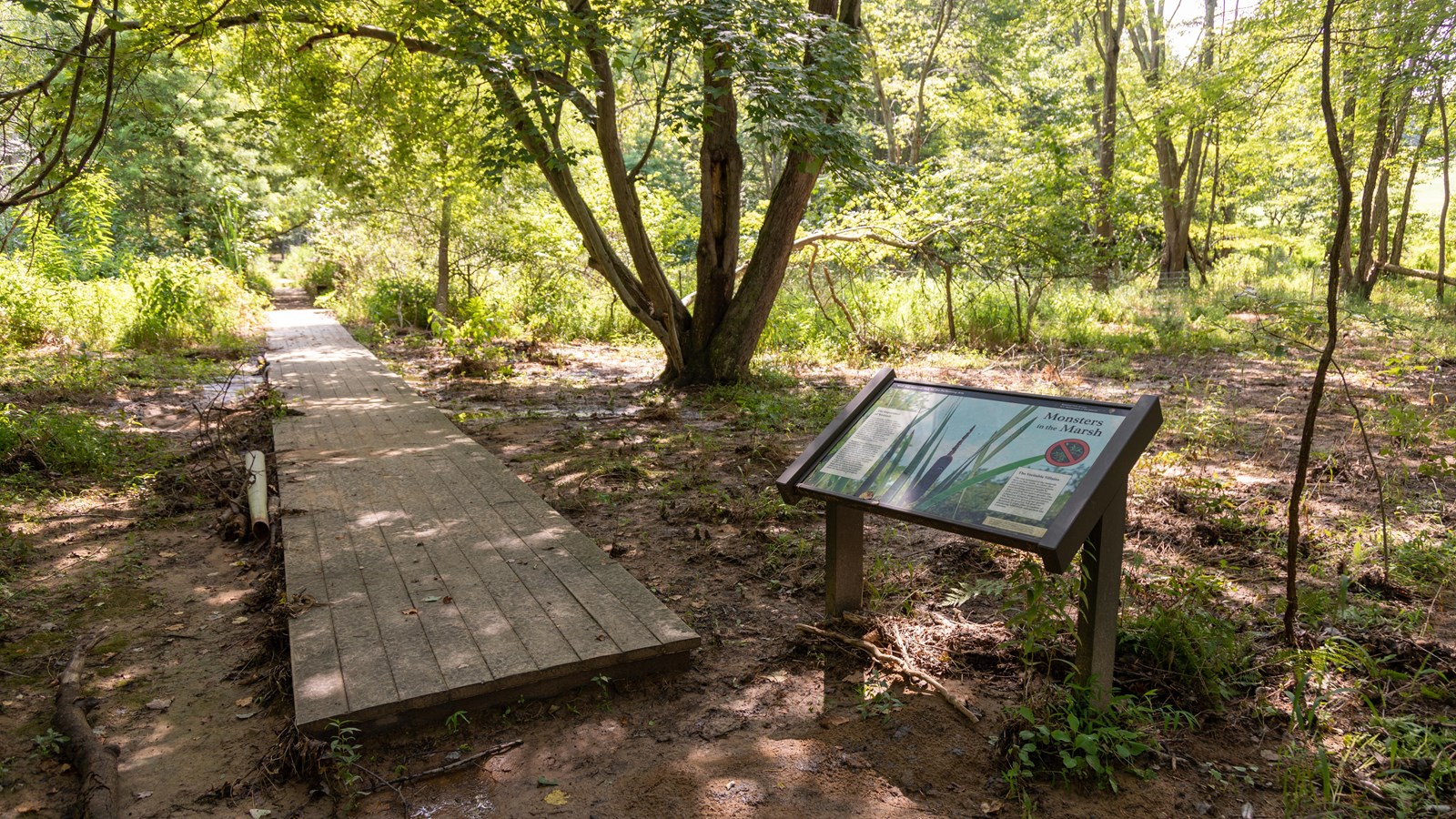Last updated: April 21, 2023
Place
Information Panel: Monsters in the Marsh

NPS / Claire Hassler
Quick Facts
Amenities
1 listed
Historical/Interpretive Information/Exhibits
Monsters in the Marsh
The Importance of Wetlands
Until recently, wetlands were considered to be disease-infested, mucky, dangerous places, filled wiht monsters like Shrek or Beowulf's Grendel. These misconceptions helped justify the destruction of over half the wetlands of the the United States. After decades of scientific research, we now know that wetlands play an important role in water purification, flood control, and shoreline stabilization.
"Wetland" describes any ecosystem in which water saturates the soil for part of the year. The wetlands here in the park are wet meadows. Often found in poorly drained areas such as shallow lake basins and low-lying farmlands, wet meadows collect runoff during periods of high rainfall and help reduce river bank erosion. They also provide important refuge to insects, act as corridors to allow species to travel between larger parks, and serve as outdoor classrooms to educate the public about the importance of wetlands.
The Veritable Villains
The real monsters of the wetlands have no feet, teeth, or claws: they are invasive plants! Invasive plants compromise wetland health by monopolizing scare soil nutrients and crowding out native species. One of the park's most dangerous invasives is Japanese Stiltgrass, picture above. The fluorescent-green grass quietly blankets the ground, but don't be deceived! a single plant is capable of producing 1000 seeds and spreads like a disease.
Want to learn more about the natural world found here at Wolf Trap National Park for the Performing Arts? Continue along the Wolf Trap Trail to discover the park's wetland, pond, and meadow ecosystems and the plants and animals that call these places home.
The Importance of Wetlands
Until recently, wetlands were considered to be disease-infested, mucky, dangerous places, filled wiht monsters like Shrek or Beowulf's Grendel. These misconceptions helped justify the destruction of over half the wetlands of the the United States. After decades of scientific research, we now know that wetlands play an important role in water purification, flood control, and shoreline stabilization.
"Wetland" describes any ecosystem in which water saturates the soil for part of the year. The wetlands here in the park are wet meadows. Often found in poorly drained areas such as shallow lake basins and low-lying farmlands, wet meadows collect runoff during periods of high rainfall and help reduce river bank erosion. They also provide important refuge to insects, act as corridors to allow species to travel between larger parks, and serve as outdoor classrooms to educate the public about the importance of wetlands.
The Veritable Villains
The real monsters of the wetlands have no feet, teeth, or claws: they are invasive plants! Invasive plants compromise wetland health by monopolizing scare soil nutrients and crowding out native species. One of the park's most dangerous invasives is Japanese Stiltgrass, picture above. The fluorescent-green grass quietly blankets the ground, but don't be deceived! a single plant is capable of producing 1000 seeds and spreads like a disease.
Want to learn more about the natural world found here at Wolf Trap National Park for the Performing Arts? Continue along the Wolf Trap Trail to discover the park's wetland, pond, and meadow ecosystems and the plants and animals that call these places home.
